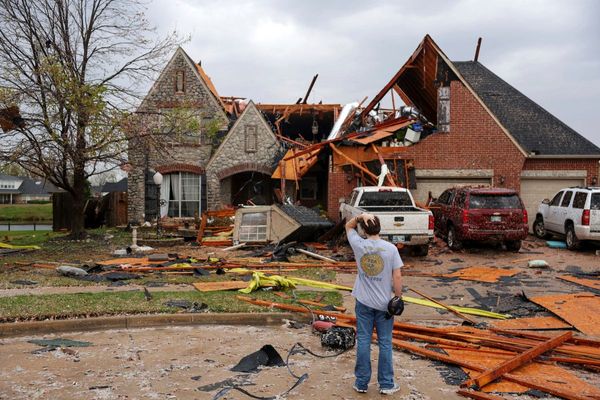
The sooty air pollution spewed out by cars, trucks and factories is causing widespread harm to people’s hearts and lungs even with the smallest amounts of exposure, with government regulations still routinely allowing for dangerous risks to public health, two major new studies have found.
There is no safe amount of a microscopic form of airborne pollution known as PM2.5, consisting of tiny particles of soot measuring less than the width of a human hair, for heart and lung health, US researchers found, with even small amounts raising the risk of potentially serious problems.
In one of the studies, an analysis of 60 million people in the US aged 65 and older from 2000 to 2016 found there was an increased risk of hospitalization for seven major types of cardiovascular disease when exposed to the average levels of PM2.5 found in the US.
The increased level of risk is significant, with the average pollution amount in the US causing the risk of hospital admission to jump by 29%, or nearly a third, compared with the lower air quality guideline level issued by the World Health Organization (WHO).
But even the WHO-recommended level isn’t itself safe, the second study found, with a significant increase in hospital visits occurring for cardiovascular disease and respiratory disease, as well as emergency visits for respiratory problems, when short-term PM2.5 exposure was below the WHO limit.
“We are seeing a multitude of effects from this pollution, from chronic obstructive pulmonary disease to asthma, and it’s affecting people at very low levels,” said Gregory Wellenius, an environmental scientist at the Boston University School of Public Health and co-author of the second paper. “This is affecting everyone, not just children and the elderly. It’s every age.”
The small particles of PM2.5 are primarily given off through the combustion of fossil fuels used by cars, trucks, power plants and industrial processes. The particles can also be emitted as a result of wildfires, which in some places are getting fiercer due to the climate crisis. When inhaled, the particles are lodged in the lungs, leading to a myriad of health problems.
The dangers posed by such pollution have been known for some time – according to previous research, about 5 million people a year, worldwide, die as a result from fossil fuel air pollution. Air and water pollution, together, account for one in six deaths across the planet.
However, government regulations have failed to keep pace with this menace. This month, the US Environmental Protection Agency (EPA) strengthened the national air quality standard for PM2.5, a move hailed by Joe Biden’s administration as a crucial measure that will save thousands of lives.
The new standard cuts annual allowable PM2.5 emissions from 12 micrograms per cubic meter to 9 micrograms per cubic meter. This is still above the WHO limit – which is 5 micrograms per cubic meter – and widespread harm to Americans will continue, according to the new research. “Obviously, the newly published national standard was not sufficient for the protection of public health,” the authors of the first of the two studies, both published in the BMJ, state.
The PM2.5 thresholds in other places, such as the UK and across the European Union, are also significantly higher than the WHO guidance, which has led to calls for a more stringent crackdown on killer air pollution.
“We have seen very positive impacts in reducing PM2.5 from past levels,” said Wellenius. “There have been enormous health gains from cutting this pollution while the economy keeps marching along strongly. We don’t have to choose between economic or health gains. We can have both and we should have both.”







